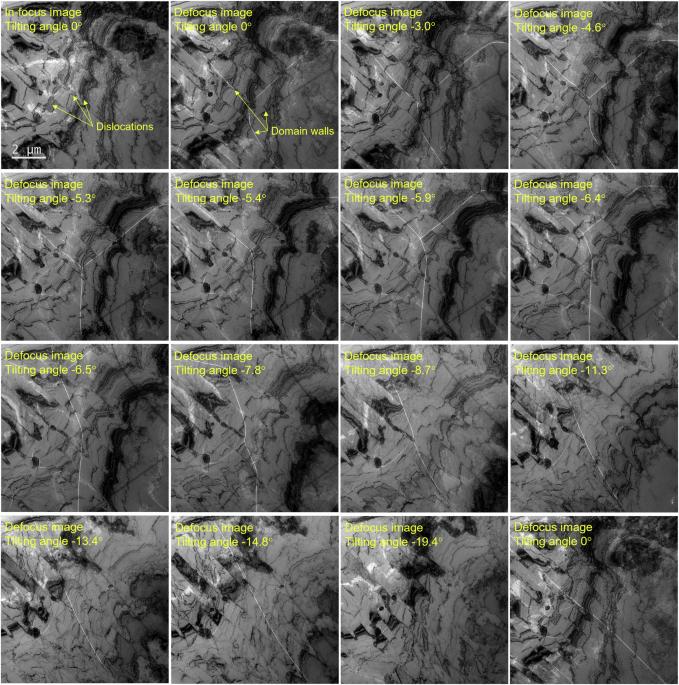Magnetic domain walls interacting with dislocations in micromagnetic simulations
IF 9.6
Q1 MATERIALS SCIENCE, MULTIDISCIPLINARY
引用次数: 0
Abstract
Defects, impurities, and embedded particles in ferromagnetic materials are long known to be responsible for the Barkhausen effect due to the jerky field-driven motion of domain walls and have more recently been shown to play a role also in domain wall dynamics in nanoscale ferromagnetic structures used in spintronics devices. Simulating the magnetic domain wall dynamics in the micromagnetic framework offers a straightforward route to study such systems and phenomena. However, the related work in the past suffers from material imperfections being introduced without proper physical foundation. Here, we implement dislocation stress fields in micromagnetic simulations through the induced anisotropy fields by inverse magnetostriction. The effects of individual dislocations on domain wall dynamics in thin films of different Fe surface lattice planes are characterized numerically. As a demonstration of the applicability of the implementation, we consider disorder fields due to randomly positioned dislocations with different densities, and study the avalanche-like transient approach towards the depinning transition of a domain wall driven by a slowly increasing external magnetic field. Simulating the magnetic domain wall dynamics in ferromagnetic materials is crucial for designing spintronics devices, but including material imperfections is often challenging. Here, the effects of individual dislocations on domain wall dynamics in thin films of iron is investigated by micromagnetic simulations.

微磁模拟中与位错相互作用的磁畴壁
众所周知,铁磁性材料中的缺陷、杂质和嵌入颗粒长期以来一直是由于磁畴壁的生涩场驱动运动而产生巴克豪森效应的原因,最近的研究表明,它们在自旋电子器件中使用的纳米级铁磁结构的磁畴壁动力学中也发挥了作用。在微磁框架中模拟磁畴壁动力学为研究此类系统和现象提供了一条直接途径。然而,过去的相关工作都存在引入材料缺陷而缺乏适当物理基础的问题。在这里,我们通过反向磁致伸缩的诱导各向异性场,在微磁模拟中实现了位错应力场。我们用数值方法描述了不同铁表面晶格平面的薄膜中单个位错对畴壁动力学的影响。为了证明该方法的适用性,我们考虑了由不同密度的随机定位位错引起的无序场,并研究了在缓慢增加的外磁场驱动下,畴壁向衰减转变的雪崩式瞬态方法。模拟铁磁材料中的磁畴壁动力学对于设计自旋电子器件至关重要,但将材料缺陷包括在内往往具有挑战性。本文通过微磁模拟研究了铁薄膜中单个位错对畴壁动力学的影响。
本文章由计算机程序翻译,如有差异,请以英文原文为准。
求助全文
约1分钟内获得全文
求助全文
来源期刊

Communications Materials
MATERIALS SCIENCE, MULTIDISCIPLINARY-
CiteScore
12.10
自引率
1.30%
发文量
85
审稿时长
17 weeks
期刊介绍:
Communications Materials, a selective open access journal within Nature Portfolio, is dedicated to publishing top-tier research, reviews, and commentary across all facets of materials science. The journal showcases significant advancements in specialized research areas, encompassing both fundamental and applied studies. Serving as an open access option for materials sciences, Communications Materials applies less stringent criteria for impact and significance compared to Nature-branded journals, including Nature Communications.
 求助内容:
求助内容: 应助结果提醒方式:
应助结果提醒方式:


